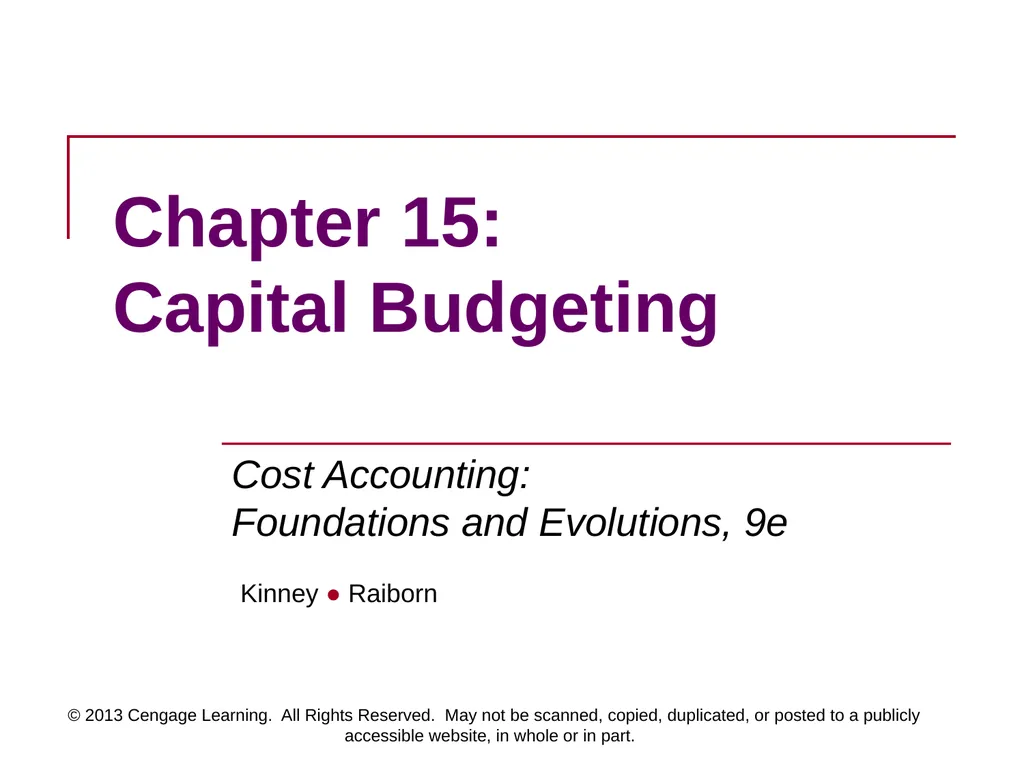
© 2013 Cengage Learning. All Rights Reserved. May
Author: tawny-fly | Published: 2025-05-29
Description: 2013 Cengage Learning. All Rights Reserved. May not be scanned, copied, duplicated, or posted to a publicly accessible website, in whole or in part. Chapter 15: Capital Budgeting 2013 Cengage Learning. All Rights Reserved. May not be
Download Presentation
Download the PPT/PDF: Download
Transcript:
Loading transcript�